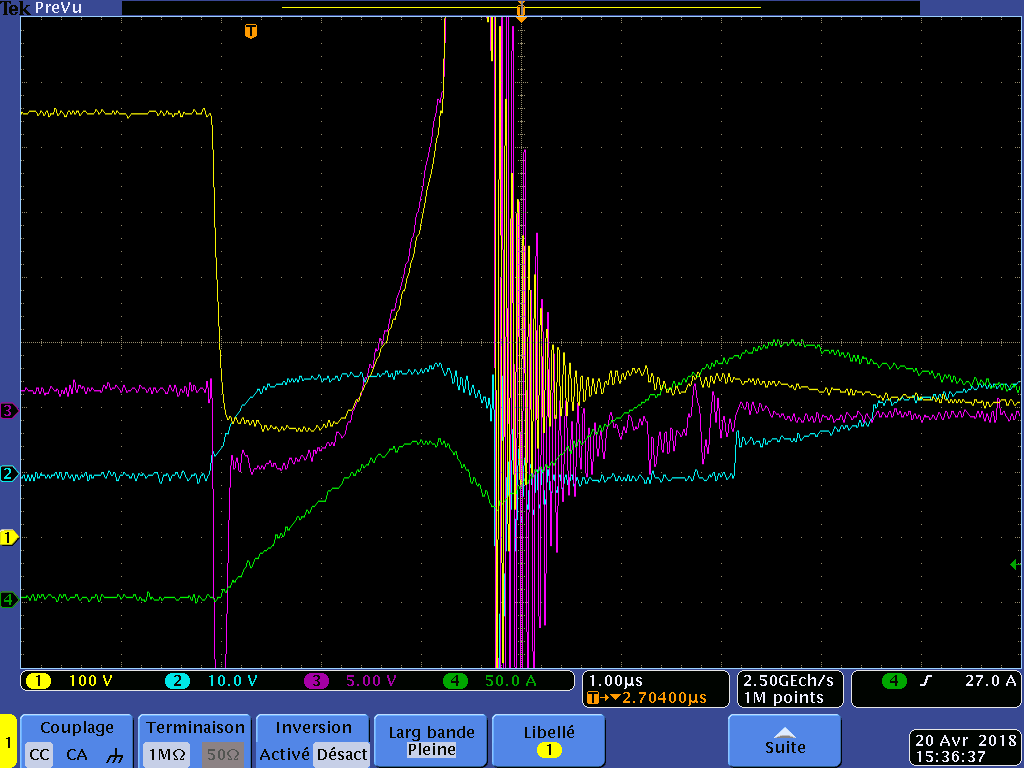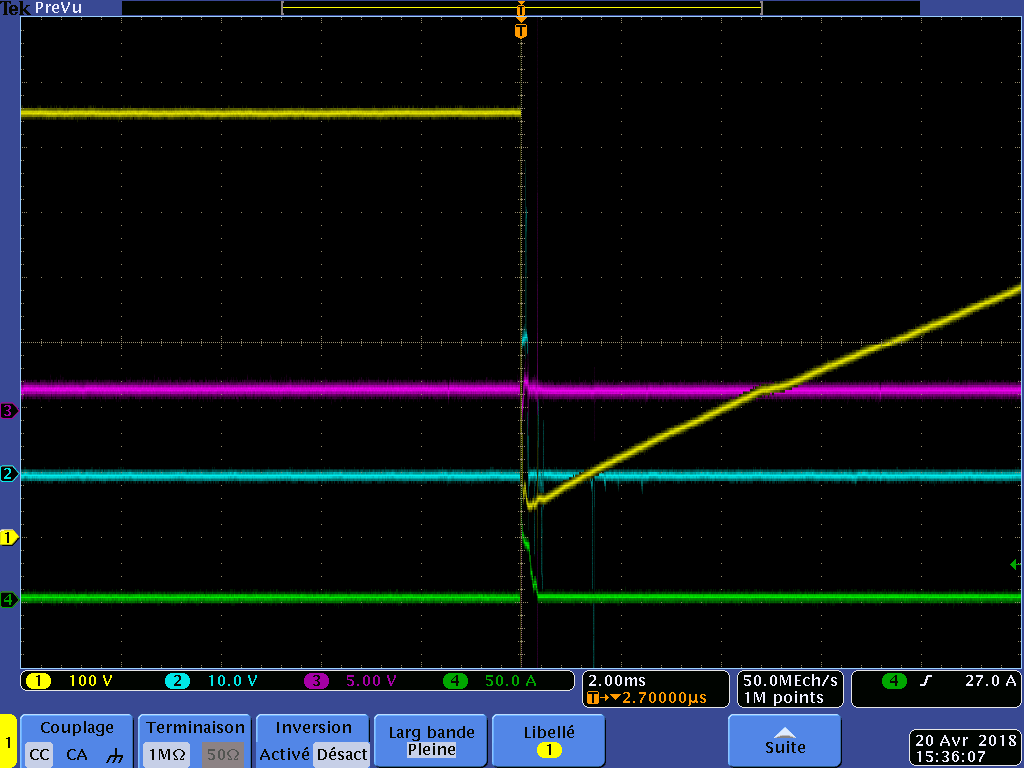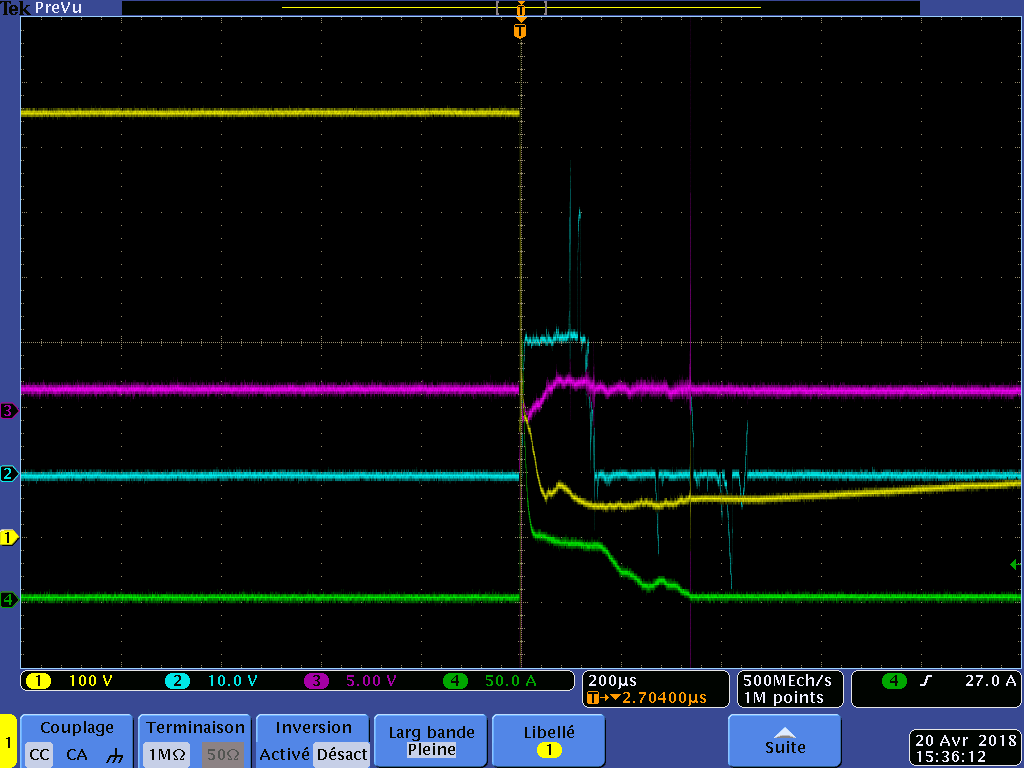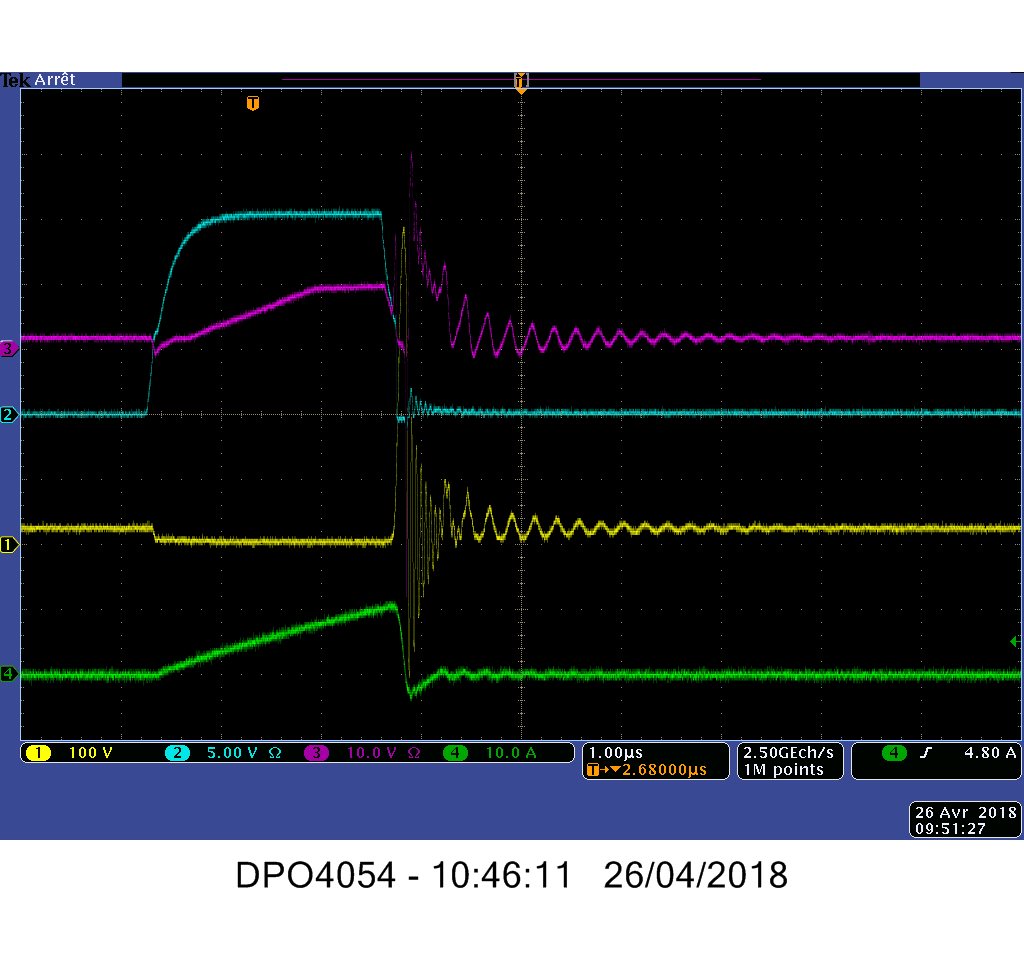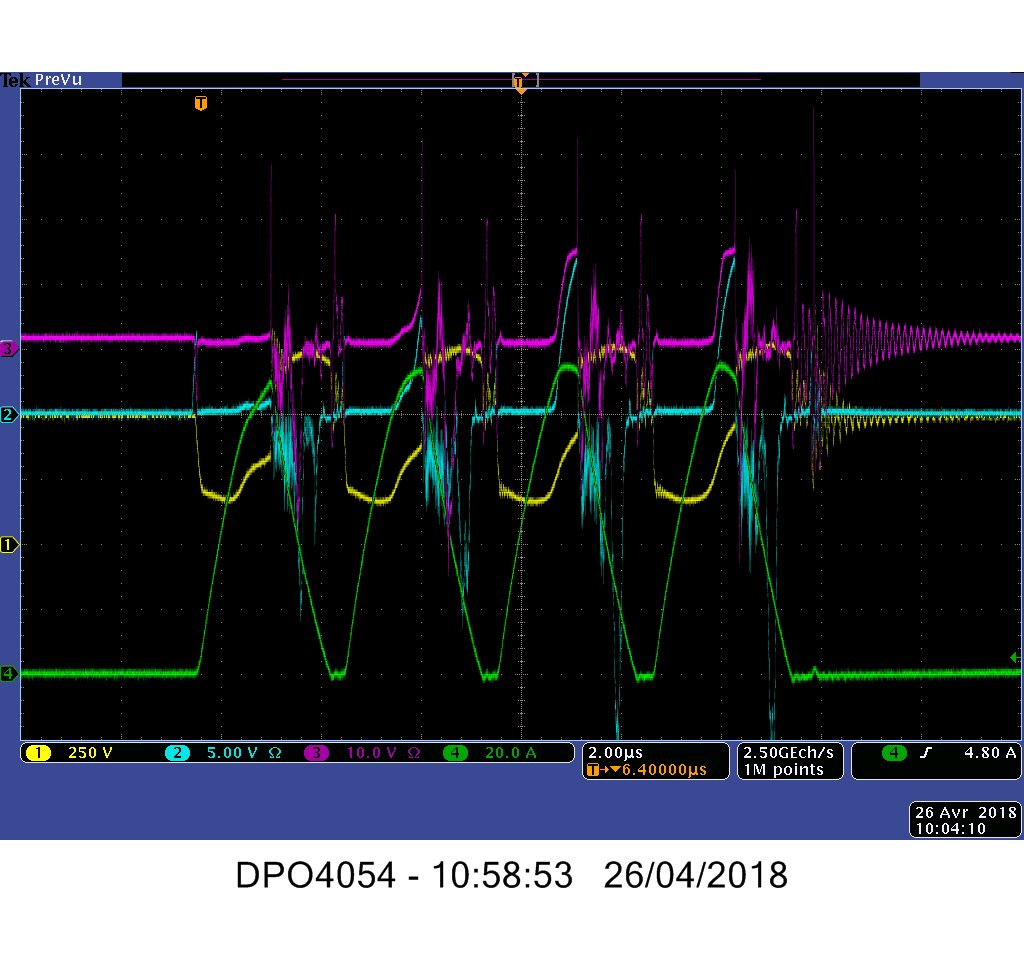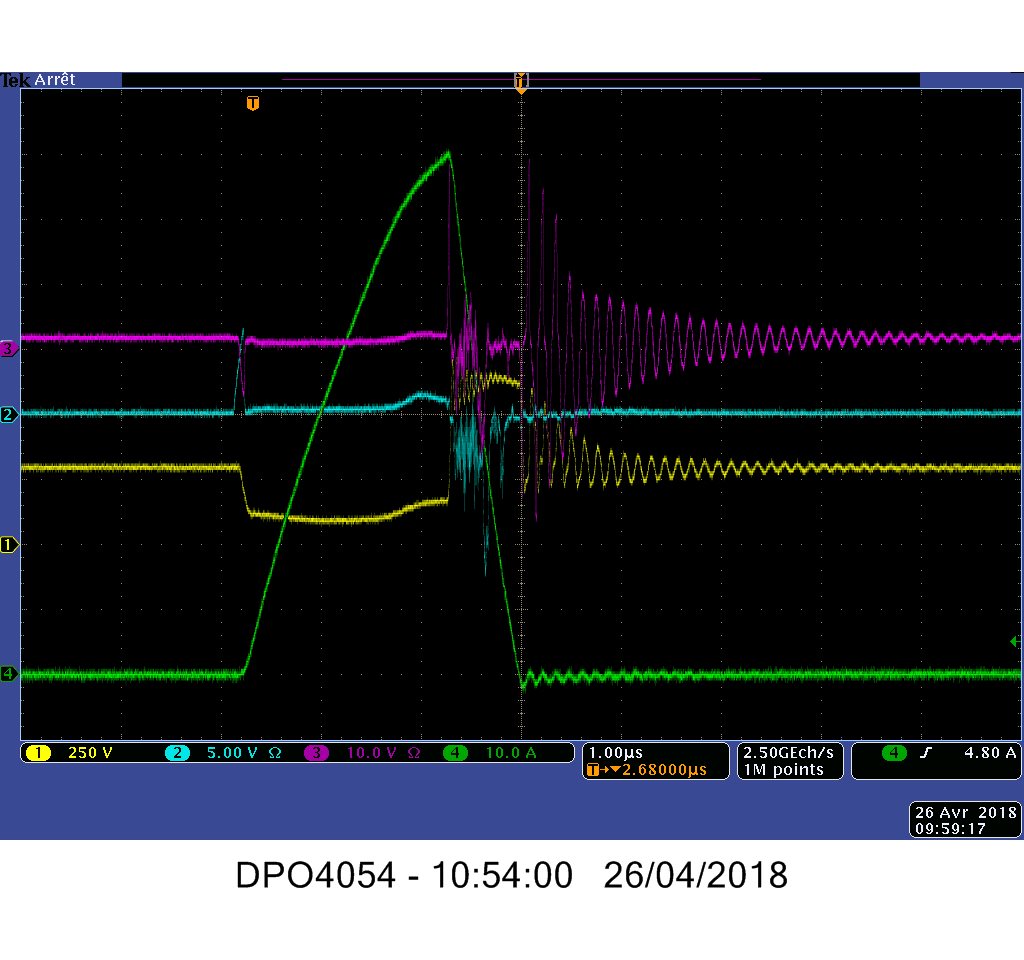Hello,
I am currently testing the ISO5851-Q1 as a gate driver for a MOSFET SiC 1200V, on à 650V line.
The 5851 is powered with 3.3V/0V on primary side, and +15V/0V on secondary side (unipolar).
I uses the DESAT function with a 1000V diode plus a 6.8V zener diode, in order to rise the threshold of the desat triggering.
In nominal case, (opening/Closing of the MOSFET, on the 650V/1A line), there is no problem. But when I apply a short circuit on my resistance, leading to a rise of the current flowing, or when I close my MOSFET on a 6501V line wihtout resistance, he DESAT is malfunctionning, leading to the (pretty messy) destruction of the MOSFET.
Here is the curves at the fault moment:
- in yellow (acq 1) is the Vds of the MOSFET (650V before the closing)
- in blue (acq 2) is the gate voltage
- in purple is the DESAT voltage
- in green is the current flowing on the 650V line.
we can see the DESAT voltage start to work, but then oscillating and re-closing the gate, leading to the desctruction.
Do you have a clue of the problem ?
Thank you in advance,
Morgan NEDELEC


